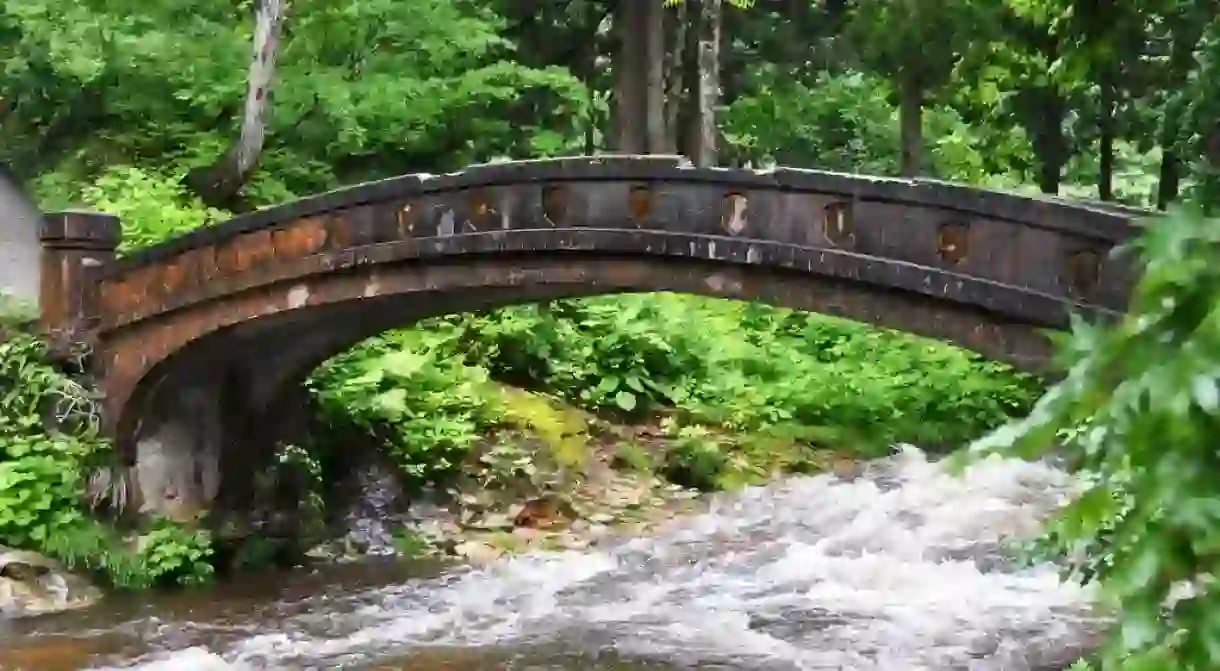How to Explore Northern Honshu Without a Car

Honshu, the main island of Japan, is home to 34 prefectures across five regions, each with their own sights, local foods, and traditions. Without a car, it can be difficult to navigate these northern regions of Honshu, divided by the rugged mountainous terrain of the Japanese Alps. Fortunately, Japan has an extensive bus and rail system that provides access to some of the most alluring attractions that northern Honshu has to offer.
There are five shinkansen, or bullet train, routes traversing northern Honshu, all of which originate from JR Tokyo Station: the Tohoku Shinkansen, Akita Shinkansen, Yamagata Shinkansen, Joetsu Shinkansen, and Hokuriku Shinkansen. If you’re visiting from overseas, you can purchase a Japan Rail Pass, which covers travel on JR lines including the bullet train. Here’s a breakdown on how to reach some of the top sites in northern Honshu by bus or train.

Tohoku Shinkansen
The Tohoku Shinkansen is the primary line running from Tokyo through northern Honshu.
Nikko and Kinugawa Onsen, Tochigi prefecture
The shrines and temples of Nikko are a popular UNESCO World Heritage site in the mountains of Tochigi prefecture that can be easily reached from Tokyo. Highlights include scenic waterfalls, hot springs at the nearby Kinugawa Onsen, and Toshogu Shrine, the mausoleum of Tokugawa Ieyasu, the first shogun of Japan.
How to get there:
For Nikko, take the Tohoku Shinkansen from Tokyo Station to Utsunomiya (50 minutes) and transfer to the Nikko Line to Nikko Station (45 minutes). From the station, walk to the shrines or take the World Heritage Site Sightseeing Bus, which offers a day pass with unlimited rides.
To go straight to Kinugawa Onsen, take the Limited Express Kinugawa 125 minutes to Kinugawa-Onsen Station.

Hirosaki Castle, Aomori prefecture
Ranked among the most beautiful castles in all of Japan, Hirosaki Castle is located far in the north of Honshu. It enjoys some of the latest blooming cherry blossoms on Japan’s main island, with the sakura lingering well into May. While you’re there, be sure to also enjoy some Hirosaki apples — a local specialty.
How to get there:
Take the Tohoku Shinkansen 205 minutes from Tokyo to Shin-Aomori Station. From there, take the Tsugaru limited express train 30 minutes to Hirosaki Station. Hirosaki Castle is a 30-minute walk from the station, or you can take the 100-yen Loop Bus to the Shiyakusho-mae stop.

Akita Shinkansen
The Akita Shinkansen runs from Tokyo Station to Akita, with stops along the way at places like the historic samurai village of Kakunodate.
Nyuto Hot Spring Village, Akita prefecture
The hot spring village of Nyuto Onsen in the mountains of eastern Akita is perfect for those seeking seclusion, yet still easily accessible by shinkansen train.
How to get there:
Take the Akita Shinkansen approximately three hours to Tazawako Station. From there, catch the Ugo Kotsu bus bound for Nyuto Onsen and get off at the final stop.

Yamagata Shinkansen
The Yamagata Shinkansen route goes from Tokyo to Shinjo Station, running through Yamagata prefecture, an area known for both its areas of unspoiled nature and cultivated agricultural land, especially cherry orchards.
Yonezawa, Yamagata prefecture
Those interested in samurai and the history of feudal Japan should make a trip out to Yonezawa City, which was home to the daimyo Kenshin Uesugi, a brilliant warrior referred to by some of his followers as the “God of War.” The Yonezawa Uesugi Matsuri is held here each spring to commemorate the battle of Kawanaka-jima with a massive reenactment featuring costumed participants.
Yonezawa is also the place to go in northern Honshu for a taste of Yonezawa beef, prized as one of the most highly marbled domestic beef brands in Japan.
To get there:
Take the Yamagata Shinkansen about 130 minutes from Tokyo Station to JR Yonezawa Station.

Joetsu Shinkansen
The Joetsu Shinkansen route runs through the northern Chubu region, connecting the Pacific Ocean side of Japan with the Sea of Japan coast.
GALA Yuzawa, Niigata prefecture
If you’re into winter sports, you’ll be happy to know that you can go straight from the shinkansen station to the slopes at GALA Yuzawa! The ski resort offers rentals for all levels from beginner to pro, in case you don’t have any gear with you in Japan.
How to get there:
Take the Joetsu Shinkansen 80 minutes from Tokyo Station to GALA Yuzawa. From there, the gondola connects you directly to the mountain.

Hokuriku Shinkansen
The Hokuriku Shinkansen route is the southernmost of the bullet train lines in Northern Honshu and provides access to some of the most popular remote destinations for visitors to Japan.
Matsumoto Castle, Nagano prefecture
Matsumoto Castle, located in Nagano prefecture, is a national treasure of Japan and the country’s oldest remaining castle that still has its original wooden keep. It’s sometimes referred to as Karasu-jo, or Crow Castle, for its elegant black walls.
How to get there:
From Shinjuku Station, take the Express Azusa or Super Azusa train 2 hours 50 minutes to Matsumoto Station. The castle is a 20-minute walk from the station, or take the Matsumoto Tour Bus “Town Sneaker” North Course about ten minutes, alighting at Matsumotojo-Shiyakushomae.

Takayama and Shirakawa-go, Gifu prefecture
Hida-Takayama has recently grown in popularity among visitors to Japan and for good reason: this charming mountain town sits in the lush nature of Gifu, its well-preserved old town area untouched by modernization. Explore traditional sake breweries, try your hand at local crafts, and enjoy the tender local brand of beef Hida-gyu.
Not too far from Hida-Takayama is the UNESCO World Heritage site of Shirakawa-go, a small village known for its distinctive farm houses with peaked thatch roofs.
How to get there:
From the Matsumoto Bus Terminal, take the Takayama Limited Express Bus 2 hours 10 minutes to Takayama. Shirakawa-go is an additional 50-minute bus ride from Takayama.














